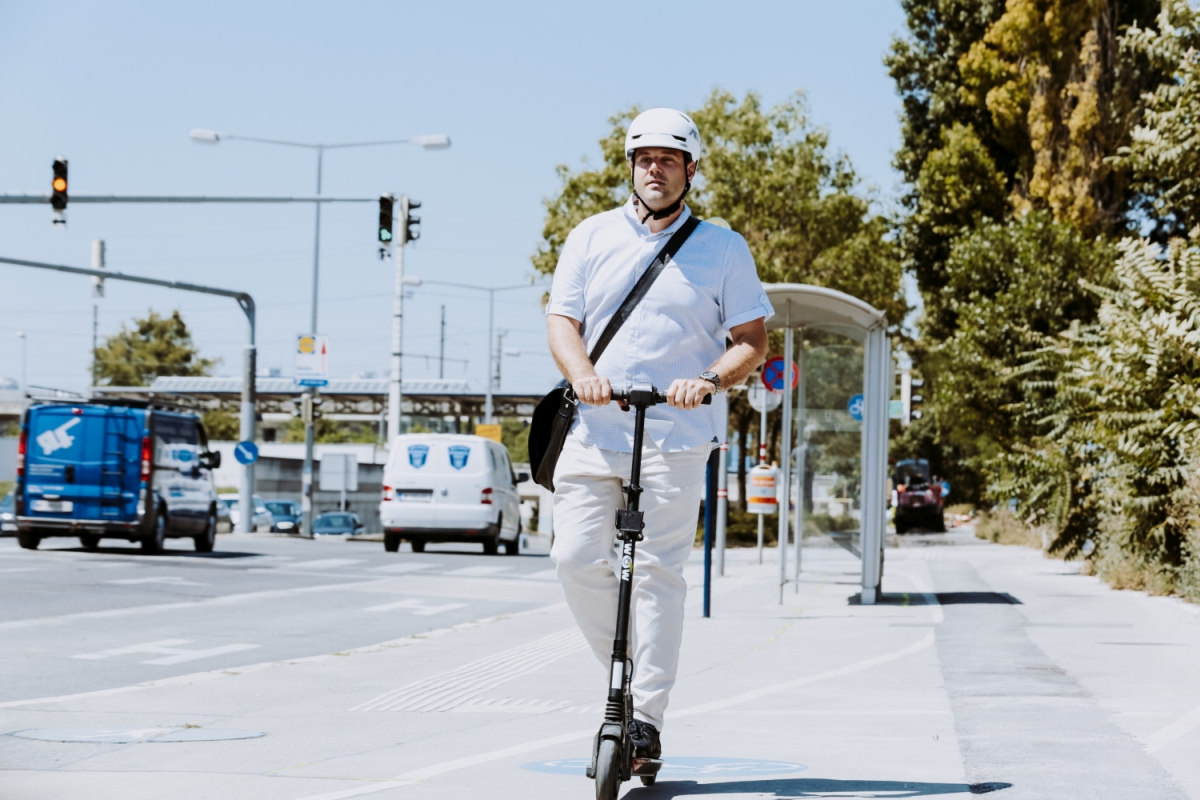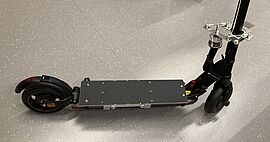Safe e-Scooter driving
Interest in e-scooters has risen sharply in recent years. It can be assumed with the utmost probability that the electrified scooter will no longer disappear from the everyday street scene. However, this new form of mobility brings with it certain risks. Current regulations largely place e-scooters on an equal footing with bicycles. From a driving dynamics point of view, however, there are significant differences between these vehicle types.
Reports of e-scooter accidents are often disseminated via the media, but there is currently no statistical basis for the number of accidents. The accident classification involving e-scooters was changed in 2019 from "accidents involving vehicle-like children's toys" to "e-bike accidents". Thus, statements on accident occurrence can only be made through the more complex analysis of detailed accident files and not through a simple database query as is usually the case.
The driving dynamics differ greatly from bicycles, but even between the different e-scooter models, significant differences are to be expected. Decisive key parameters that strongly influence road safety have not yet been investigated and researched. An increased conflict potential is also expected in mixed traffic with other road users. This is due on the one hand to higher relative speeds and on the other hand to the changed acceleration behaviour.
As this risk could be further increased by the use of e-scooters, research into risky and dangerous driving dynamics and their influence on road safety when using e-scooters is the focus of the SEED project.
Objectives of the project
Within the framework of SEED, special safety aspects for e-scooters will be investigated and the necessary preventive measures for increasing road safety will be derived.
On the one hand, the aim of the research project is to develop proposals for design and functional guidelines, compliance with which will substantially increase driving and road safety for e-scooters. This should result in objective and comparable methodologies.
On the other hand, the aforementioned sources of danger and the driving dynamics of e-scooters are to be analysed in a well-founded manner. The driving dynamics data will be collected and evaluated using objective measurement and analysis methods. Important here is comparability in terms of road safety, such as braking distance or safe manoeuvring through special situations. This can be achieved with the creation and implementation of uniform and thus comparable course tests.
Based on this, a number of easily ascertainable and at the same time decisive key features (accident-causing parameters such as tyre size and width, wheelbase, angle of the steering axle, curve radii, lane widths, etc.) are to be extracted and provided with corresponding recommendations for the legislator. These should quickly and effectively ensure that the design and construction of these vehicles are in any case adapted to the needs given in road traffic, so that e-scooters - especially as rental vehicles - can be operated intuitively and unambiguously, are as easy to control as possible and are thus safe to drive. Another result should be the creation of uniform course designs for training (e.g. at schools) in safe handling.
Funded by the
Austrian Road Safety Fund
of the BMK







